FEATURE STORY
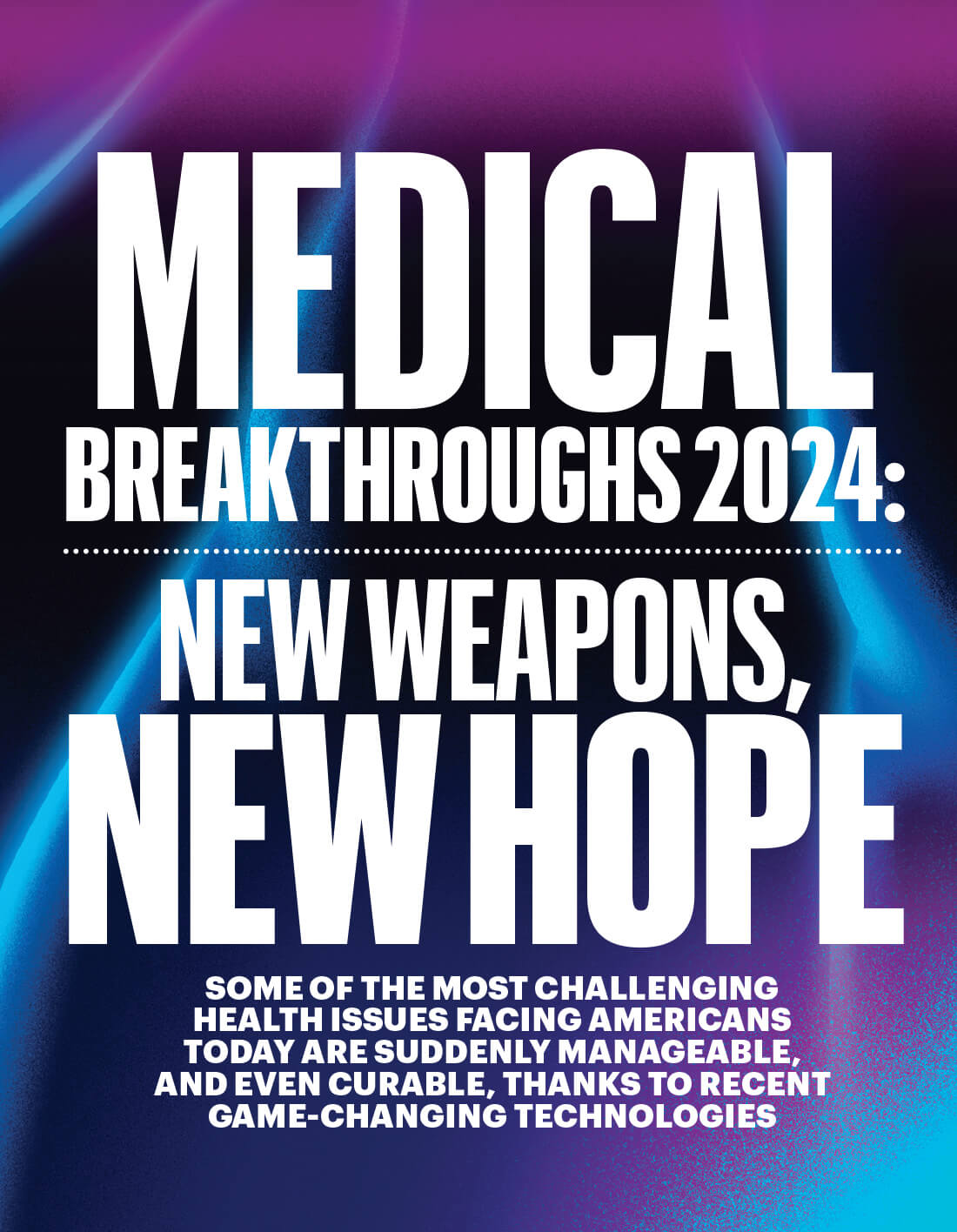
By Sari Harrar
ILLUSTRATIONS BY OLLIE HIRST
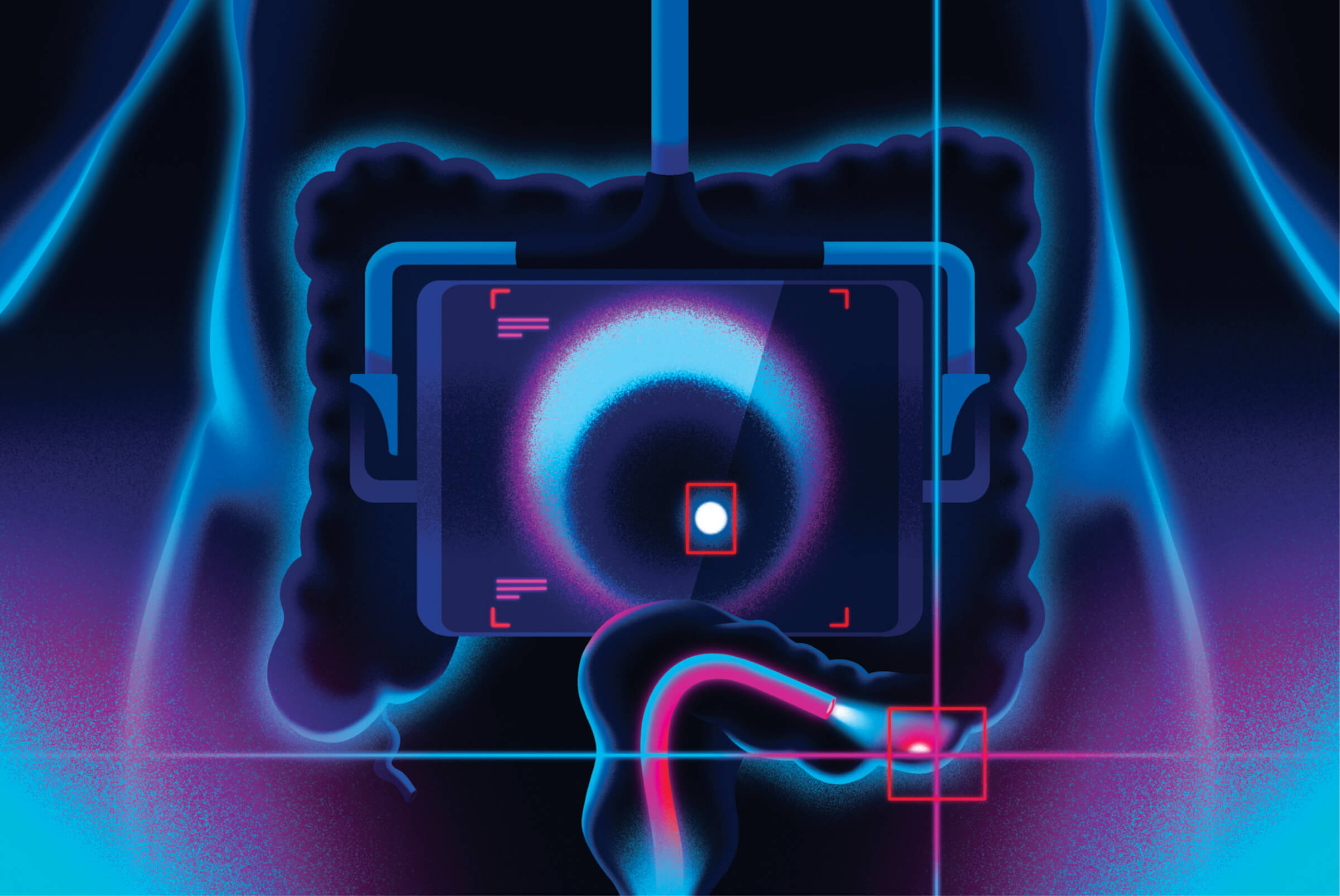
AI helps to detect more colon cancers.
CANCER
Breakthrough: AI-Assisted Colonoscopies

JOHN LLOYD put off colon cancer screenings for years. When he finally had his first colonoscopy, at age 56, it found a tumor the size of a lemon. “I was lucky,” he says. “It was stage 3 cancer that hadn’t spread beyond some lymph nodes.”
Chemotherapy, radiation and surgery wiped out his cancer. Now Lloyd, 72, president of an electrical contracting firm in Durham, North Carolina, gets colonoscopies every three years. But his most recent colonoscopy came with a high-tech twist: artificial intelligence to help spot polyps that can become cancers.
“It’s like having another set of eyes,” says Neeraj Sachdeva, M.D., of RMG Gastroenterology in Raleigh, North Carolina. “It allows you to do a more meticulous exam.”
A traditional colonoscopy relies on the eyes of the doctor, yet some types of abnormal growths in the colon can be hard to spot. GI Genius from Medtronic, the first AI-assisted colonoscopy system available in the U.S., got FDA marketing authorization in 2021; others are coming out. The computer-aided system swiftly analyzes in real time the high-definition video images from a doctor’s endoscope (the tiny camera used to examine the interior walls of the colon during a colonoscopy). Potential trouble spots are highlighted in a green-edged box on the monitor viewed by the doctor.
It’s estimated that in 2024, 152,810 people in the U.S. will be diagnosed with colorectal cancer; 53,010 will die, according to the American Cancer Society. Colonoscopy lowers cancer risk by finding precancers and removing them, Sachdeva says. AI has made colonoscopies even more accurate: In one study, the technology boosted the discovery of growths from 33 to 42 percent in doctors who were considered experts at performing colonoscopies and analyzing results, finding early cancers and reducing the rate of future tumors.
[ CANCER BRIEFS ]
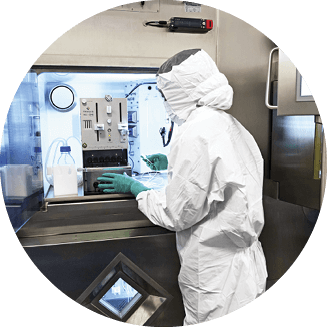
▶︎ Prostate Cancer Therapy Spares Healthy Tissue
A new treatment for one type of metastatic prostate cancer delivers radiation directly to prostate tumor cells and spares healthy tissue. Approved by the FDA in 2022, Pluvicto is a type of cancer treatment called theranostics, in which the body is scanned so doctors can identify where the cancer is, followed by treatment that attaches to the targeted cancer cells before releasing radiation. The median overall survival of those who received Pluvicto plus the best standard of care (BSoC) increased by four months compared with those who received the BSoC alone.
▶︎ A Better Way to Check Lymph Nodes for Cancer
Surgeons typically remove additional tissue during cancer surgeries so lymph nodes can be checked for cancer. It’s a challenging, time-consuming task, and lymph nodes are frequently missed. A new imaging system called InVision uses shortwave infrared light to highlight lymph tissue. In an ongoing study of about 100 patients, 4 percent were found to have cancerous lymph nodes previously overlooked by doctors.

Get That Colon Check—Now!
“Colorectal cancer mortality is going down because we’re picking up more cancers and precancers as more people get screened,” says Sachdeva. But some midlife and older adults aren’t getting checked. “The technology is there,” says Sachdeva. “If we catch your lesion early, taking care of it is simple. You can avoid chemotherapy, radiation and surgery.”

Surgery to remove brain bleeds
BRAIN HEALTH
Breakthrough: Lifesaving Surgery for Deadly Bleeding Strokes

KAY WILLIAMS felt “real, real strange.” Her head ached; her eyes grew heavy. As she slid out of her office chair, a colleague quickly dialed 9-1-1. “My headache turned to blackness,” says Williams, 63. “I guess that’s when the aneurysm in my brain erupted.”
It was May 2018. Williams was a healthy 56-year-old with three grown children and a successful career as a new-car salesperson in Atlanta. Suddenly, she was having the most lethal kind of brain attack—a hemorrhagic stroke caused by a burst blood vessel. With no effective treatments for this emergency that strikes more than 100,000 Americans each year, her chance for survival hovered at 60 percent and her odds for a lifetime of disability were as high as 88 percent. When a neurosurgeon at Atlanta’s Grady Memorial Hospital told Williams’ daughter about an experimental procedure to drain the blood clot from her mother’s brain, she said yes.
“There’s no more sensitive organ than the brain,” says neurosurgeon Gustavo Pradilla, M.D., chief of neurosurgery for Grady Health System, who performed the procedure. After a hemorrhagic stroke, every minute brings more damage. Blood accumulates and crushes delicate tissue. “The clots can be the size of a tennis ball, generating a tremendous amount of pressure in the brain,” he explains. Treatment typically involves drugs to lower blood pressure and correct clotting problems, but those approaches can’t remove the clot itself. Conventional brain surgery is a risky last resort, Pradilla says.
He and a team instead approached Williams’ brain bleed with a procedure called minimally invasive parafascicular surgery (MIPS). First, they used brain scans to create a road map of Williams’ bleed. Then they threaded a thin, pencil-shaped device called BrainPath along brain folds to ground zero for her stroke. Guided by live, magnified imaging, the device gently nudged aside white matter connections between brain areas that carry signals for speech, memory and other vital functions. The surgeons then inserted a tool called Myriad that suctioned up the clot. “Clots can become fibrous, almost like rubber,” Pradilla says. “But no matter how hard, we can get it out.”
MIPS was tested over six years in 300 people with intracerebral hemorrhage at 37 medical centers across the U.S. Survival and recovery in the 180 days after a stroke were higher for stroke patients who had MIPS than for those who received medications alone, according to a 2024 study in The New England Journal of Medicine. “I have seen many amazing outcomes,” he says. “Patients came in unable to speak and walk, almost in a coma-like state with a breathing tube. [These patients] can now walk, speak and return to a normal life.”
Just four months later, Williams was back to selling cars, a job she’s loved for 38 years now. Her only concession: wearing sneakers instead of high heels because she feels a little dizzy sometimes. She had a seizure a few months after returning to work and takes anti-seizure medication. “I feel better,” she says. “I think better with the medication too.” Williams now gives motivational talks to youth groups, including incarcerated young people. “I want people to know to always believe in God and have faith,” she says. “That research saved my life.”
[ BRAIN HEALTH BRIEFS ]

▶︎ New Alzheimer’s Drug Slows Decline
In July, the FDA approved Kisunla (donanemab), a monthly infusion that reduces the speed of cognitive decline and levels of amyloid plaque, a hallmark of Alzheimer’s disease.
▶︎ On the Horizon: MRI-Equipped Ambulances
Researchers at the Medical University of South Carolina are testing the feasibility of equipping standard ambulances with magnetic resonance imaging machines so that EMTs can evaluate stroke victims before they reach the hospital.
▶︎ Also on the Horizon: Early Test for Parkinson’s Disease
A new blood test uses AI to find warning signs for Parkinson’s up to seven years before a person has symptoms. Early diagnosis may allow for treatments to delay or prevent the disease from damaging nerve cells that control movement.

Stroke Symptoms? Act FAST!
It takes stroke victims a median time of 140 minutes to get to a hospital, according to a 2024 study. Waiting to call 9-1-1 could drastically lower your odds for lifesaving treatments, says Pradilla. Wondering if you’re having a stroke? Use the American Stroke Association’s FAST guide: Facial drooping, an Arm (or leg) that’s suddenly impaired, Slurred speech or inability to communicate, and Time to call 9-1-1!
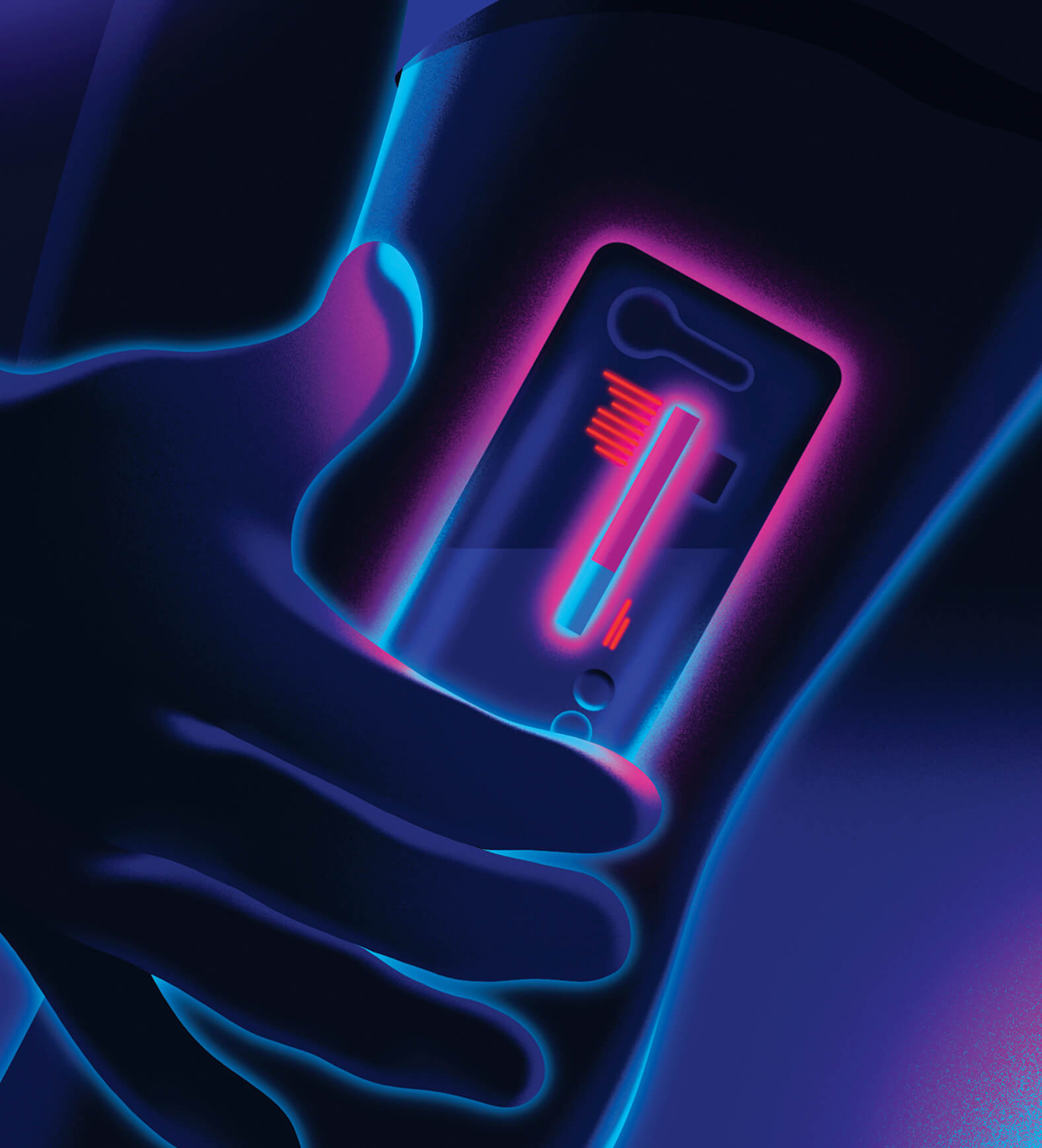
Insulin delivered by a tiny, discreet pump
DIABETES
Breakthrough: Small and Easy Insulin Pumps for Type 2 Diabetes
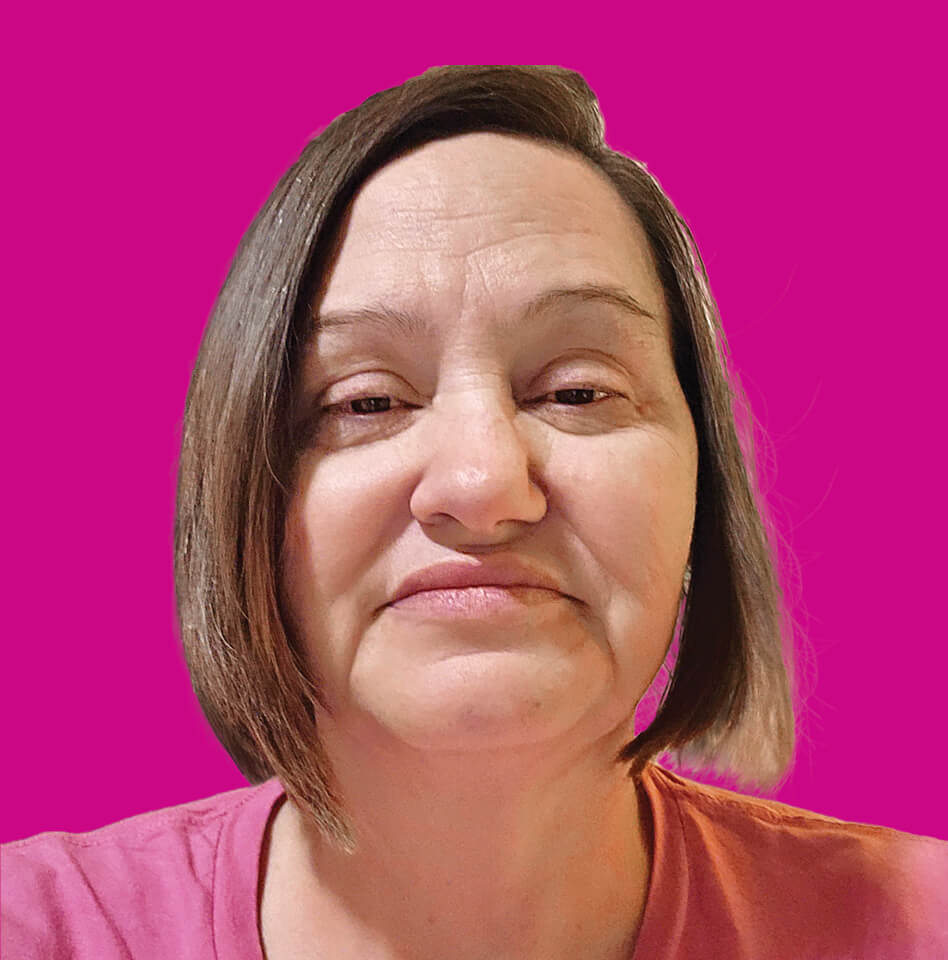
WHEN TONYA CRUTCHFIELD went swimming in the scenic Buffalo River in Arkansas in June, she wore an insulin pump smaller than a deck of cards under her bathing suit. “Nobody could see it,” says Crutchfield, 54, who has had type 2 diabetes since her 30s. “I don’t have to carry needles and insulin or find a private place to give myself a shot.”
Like about 1 in 4 of the roughly 35 million Americans with type 2 diabetes, Crutchfield uses insulin to help control her blood sugar. Giving herself four shots a day required pricking her finger for a blood sugar check, calculating her next insulin dose, filling a syringe and injecting herself. Sometimes Crutchfield did it in her car or in a bathroom stall. But too often, she skipped it—especially if she was busy, or simply couldn’t tote her insulin around in a cooler bag to keep it cold. “I hated the shots,” she says.
As a result, her blood sugar was often sky-high, boosting her risk for eye problems, nerve damage and kidney trouble. At her doctor’s suggestion, in late 2023 she tried V-Go, an insulin patch pump specifically designed and FDA approved for people with type 2 diabetes. The disposable device attaches to her skin with adhesive and contains a day’s worth of insulin delivered continuously through a tiny needle into her skin. Before meals, she can adjust the dosage so it can handle blood sugar increases from any carbohydrates—such as bread, pasta, rice, fruit or dessert—she’s about to eat. “My sugars have been fantastic,” she says. Crutchfield’s A1C—a measure of blood sugar control over two to three months—fell from a dangerously high 13 percent to below 7 percent, the goal for most people with diabetes, according to the American Diabetes Association.
Patch pumps have been around for nearly 20 years, but they were traditionally used by people with type 1 diabetes. Now several patch pumps for type 2 are on the market, and more are in development.
“If you can get your A1C down and stable, it can reduce risk for complications of diabetes, especially for the eyes, kidneys and nerves,” says endocrinologist Shunzhong Bao, M.D., of CHI St. Vincent Little Rock Diagnostic Clinic, who treats Crutchfield’s diabetes. “Stable, controlled blood sugar also reduces cardiovascular risks.”
Patch pumps are small, easy to use and waterproof, although the insulin dose often can’t be as finely calibrated as with a traditional insulin pump. And with a pump, you still have to test your blood sugar four times a day, though newer continuous-glucose monitors that send the data right to your phone make that simpler. “Living with diabetes is not easy,” Bao notes. “These patch pumps can be really helpful.”
[ DIABETES BRIEFS ]
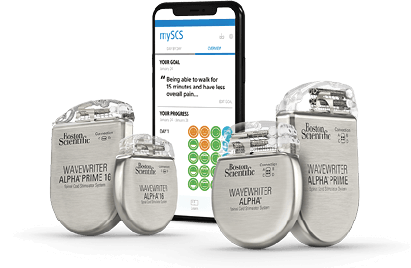
▶︎ Spinal Cord Stimulation for Diabetic Neuropathy
Implanted spinal cord stimulation systems from four companies gained FDA approval in 2022 and 2023 for easing the pain of a type of nerve damage called diabetic peripheral neuropathy. In a 2023 study of 216 people with this painful condition, 76 percent of those who received mild electrical signals applied to the spine reported their pain improved by 50 percent or more after six months.
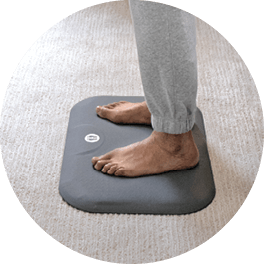
▶︎ Foot Mat Detects Early Foot Ulcers
An FDA-cleared foot mat senses temperature changes in the soles of the feet, a warning sign of increased risk for foot ulcers, infection and even amputation. Used daily for 20 seconds, SmartMat from Podimetrics scans feet for temperature changes; in a 2020 study, device users had fewer foot ulcers.
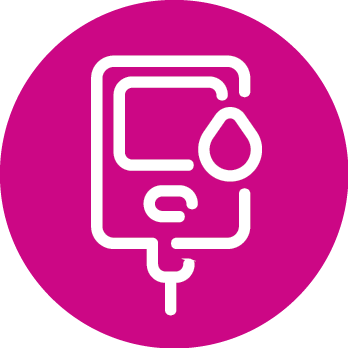
Tackle Type 2 Diabetes Aggressively
“If your blood sugar is really out of control, beta cells in your pancreas that produce insulin can die faster,” says Bao. “Getting blood sugar down can preserve beta cell function. Or if your blood sugar has been high for many years, you may have a severe insulin deficiency.” Newer diabetes drugs may reduce or eliminate the need for insulin in type 2 diabetes, but for now it’s a good tool for controlling blood sugar.

Doctors can monitor heart failure patients from miles away.
HEART HEALTH
Breakthrough: Game-Changing Treatment for Heart Failure

LARRY GOODMAN checks his weight, blood pressure and pulse every morning. Then, as he makes breakfast in his kitchen in Middletown, Delaware, a digital health company 3,000 miles away in California reviews his numbers. “When you have a bad heart, every time you feel something you think, This is it,” says Goodman, 69. “But I don’t panic anymore. If there are numbers I don’t like, I get a call from my doctor’s office in 10 to 15 minutes.”
Goodman has “heart failure with reduced ejection fraction,” meaning that the left side of his heart is too weak to pump enough blood out to his body.
Goodman first landed in the hospital with heart failure 15 years ago, unable to breathe and with fluid accumulating in his body, and had been in and out of the hospital ever since. A few years ago, he joined a program at ChristianaCare, a Delaware-based health system that offered a new digital monitoring program aimed at helping Black Americans with advanced heart failure get access to a breakthrough treatment: a combination of four drugs that together can save lives.
The drugs cut the risk of early death by 70 percent, improve symptoms and even help the heart function better. Without them, 10 to 15 percent of people with advanced heart failure are likely to die in just two years. In 2022, the American Heart Association and American College of Cardiology updated their guideline-directed medical therapy and for the first time recommended these four drugs, hailed as the “fantastic four.” Yet most people who could benefit aren’t getting them. In a 2024 Duke University study of 33,036 older adults hospitalized for heart failure, 4 out of 5 were candidates for the drug combo but fewer than 1 in 6 got them. Among older adults, rates are especially low.
A tidal wave of new digital and remote monitoring programs is changing that. Those with heart failure can now track key health indicators at home with close monitoring by health care practitioners.
“It’s almost like the clinic is brought to the patients,” says Sourin Banerji, M.D., medical director of Advanced Heart Failure at ChristianaCare Health. Other health systems are using a variety of home monitoring options, including an implanted sensor called CardioMEMS, approved by the FDA in 2022.
It’s helping. “We see every day how much better our patients are doing,” says Banerji. “They have more stamina. They can remain independent longer. They’re less likely to be readmitted to the hospital.”
The four types of drugs used in this treatment strategy are a combination of mineralocorticoid receptor antagonists to remove extra water and sodium from the body; blood pressure drugs that help to relax blood vessels so the heart doesn’t have to work as hard; beta-blockers to reduce heart rate and sometimes improve some heart damage; and sodium glucose cotransporter-2 inhibitors, diabetes drugs shown to reduce symptoms and deaths in people with heart failure.
Goodman is on all four medications now. “My doctor adjusted my doses often,” he says. “And I do feel better. Less breathless.” A lifelong trumpet player, Goodman hopes his stronger, steadier heart will let him get back to participating in Taps Across America, a nationwide Memorial Day observance.
[ HEART HEALTH BRIEFS ]

▶︎ Artificial Intelligence for Lower Blood Pressure
About 68 percent of Americans with high blood pressure have their pressure well controlled. MedsEngine uses AI to analyze and improve treatments. It increased the number of patients with well-controlled HBP to 93 percent in one Dayton, Ohio, medical practice.
▶︎ Supermarket Carts Spot A-fib
In a recent U.K. study, grocery store carts fitted with electrocardiogram sensors in the handles uncovered 39 cases of previously undiagnosed atrial fibrillation (A-fib), irregular heart rhythms that can raise the risk for stroke.
▶︎ On the Horizon: A Test and Treatment for Blood Lipids
High levels of the blood fat Lp(a) can boost risk for heart disease six times higher than the more well-known low-density lipoprotein (LDL). Five experimental Lp(a)-lowering drugs are in development, including zerlasiran, a gene-silencing treatment that lowered levels 90 percent in a human trial.

Recognize Early Heart Failure Signs
Nearly 1 million U.S. adults are diagnosed each year with heart failure, but more than one-third of cases are missed by primary care physicians at early, more treatable stages, according to a 2021 study. Don’t overlook the early warnings of heart failure: Shortness of breath, a dry cough that’s worse at night, tiredness, nausea, low appetite and leg swelling or an increase in the girth of your torso are potential indicators of fluid buildup when the heart isn’t pumping strongly, says Sourin Banerji, M.D. If you are diagnosed, make an appointment with a heart failure specialist, Banerji suggests.
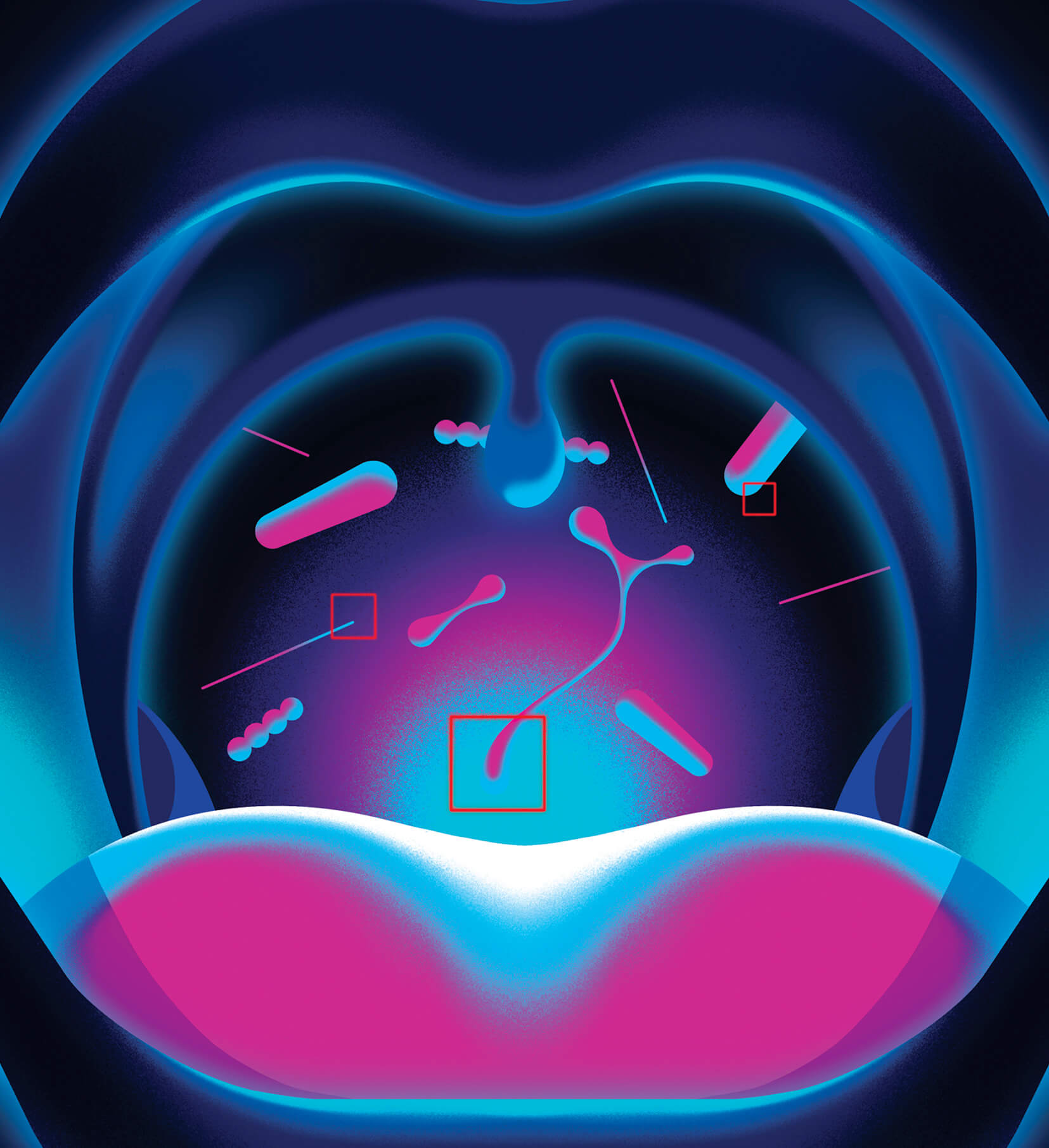
A new way to reset your gut microbiome
DIGESTIVE HEALTH
Breakthrough: A New Treatment for C. Diff

FREDA PYLES’ ROAD trip from Wichita, Kansas, to her home in Pennsylvania was a nightmare. Severe diarrhea meant urgent bathroom breaks at every rest stop for hundreds of miles. In Ohio, her husband took her to an emergency room. “I was dehydrated. My kidneys were shutting down,” says Pyles, 76, of her 2021 ordeal. “I couldn’t walk.”
Pyles was infected with Clostridioides difficile (commonly known as C. diff or C. difficile)—a highly contagious germ that kills 30,000 Americans annually, most of them older adults. The infection took hold when an antibiotic prescribed for a tooth infection killed beneficial bacteria in her intestines that can normally keep C. diff in check.
A gold standard C. diff treatment, the antibiotic vancomycin, brought her a little relief but quickly set the stage for more trouble. It further wiped out protective gut bacteria, allowing tough C. diff spores to grow, release diarrhea-triggering toxins and kick-start a new infection. Back home in rural Russell, Pennsylvania, Pyles spent her days in a chair close to the bathroom. She stopped gardening, keeping bees, swimming at the local YMCA and helping her husband take care of the couple’s flock of chickens. For four months she had recurrent C. diff infections. It’s a dangerous cycle that affects about 35 percent of older adults after a first bout of C. diff and kills 1 in 4 of them, according to a 2022 Yale University study of Medicare beneficiaries.
“By January I had lost 45 pounds, could hardly walk to the bathroom and had fallen a couple of times,” she says. “My husband was really worried. He told a friend he was slowly watching me die.”
Then a stool specimen donated by a stranger—processed into an investigational fecal transplant therapy packed with beneficial bacteria—stopped her symptoms. In February 2022, Pyles and her husband drove to New Haven, Connecticut, for the treatment. Pyles first received a potent antibiotic to halt her infection (it also allowed her to sit in a car for the seven-hour trip). When she arrived in New Haven, she underwent a treatment she likens to an enema. “You receive this small bag of good bacteria and lie there for about 45 minutes. It just went in. And all those good bacteria went to work.”
In November 2022, the treatment— Rebyota—became the first FDA-approved fecal microbiota product and the first against recurrent C. diff. “We’re giving the microbiota a boost,” says gastroenterologist Paul Feuerstadt, M.D., an associate clinical professor at Yale University School of Medicine who studied the treatment and provided Pyles’ transplant. “We’re allowing a healthy, diverse microbiota to grow and become strong in a much more expedited way. It’s a real game changer.” In studies of people with recurrent C. diff, a fecal microbiota transplant was effective at stopping repeat infections for 80 percent of them at eight weeks, and 92 percent hadn’t had a recurrence two years later.
Fecal transplants aren’t new; they were used for severe diarrhea 1,600 years ago in China. Researchers have been studying them since the 1950s, not only for C. diff but for other digestive problems like irritable bowel syndrome and ulcerative colitis, depression, anxiety and diabetes. Specialists have used them against severe, repeat C. diff for over 10 years, and medical guidelines have recommended them for that use since 2017.
But Feuerstadt notes that having FDA-approved C. diff treatments is a major advance. In 2023, the FDA OK’d a second fecal microbiota treatment for C. diff. Called Vowst, it’s in the form of capsules taken by mouth. “The difference between FDA-approved products and non-FDA approved is that we know what we are administering,” Feuerstadt says. “We have a much higher level of sophistication. We’re seeing an evolution. This could be used much earlier in recurrent C. diff and by physicians in the community, not just by specialists. It shuts down recurrence. And it lifts the burden of anxiety, depression and fear that people with recurrent C. diff have.”
[ DIGESTIVE HEALTH BRIEFS ]
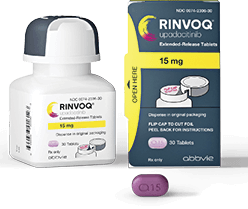
▶︎ New Hope for Crohn’s Disease
The first FDA-approved pill for Crohn’s disease, upadacitinib (Rinvoq), blocks enzymes that play a role in inflammation. In studies, 39 to 50 percent of Crohn’s patients who hadn’t responded to other treatments went into remission after 12 weeks.

▶︎ A Vibrating Pill for Constipation
First available in 2023, FDA-cleared Vibrant capsules start vibrating to stimulate the colon about 14 hours after they’re swallowed. In a 2023 study of 312 people with chronic constipation, 39 percent had an extra weekly bowel movement and 23 percent had two after taking the capsules five times a week for eight weeks. The prescription-only capsules stimulate the intestinal walls to contract and are eliminated from the body naturally.
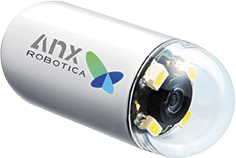
▶︎ A Remote-Controlled Camera in a Pill
George Washington University researchers are fine-tuning a camera pill that can be steered—so it’s not just tumbling on its own. In a 2023 study, they used a magnet and joysticks to move the capsule around in the stomachs of 40 volunteers. Eighty percent of the volunteers preferred it over a standard endoscopy.
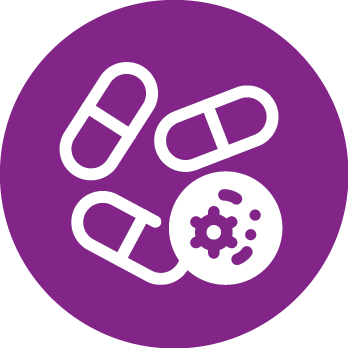
Rethink Your Antibiotic Use
You can lower your risk for a C. diff infection by using antibiotics only when necessary, thereby protecting your gut microbiome from C. diff, says Feuerstadt. When you’re in a situation where you could be exposed, such as visiting a hospital or nursing home, “wash your hands with soap and water for at least 15 seconds afterward,” he says. “Alcohol-based hand sanitizers don’t kill the spores of C. diff.”
Sari Harrar writes for numerous national publications. She is a contributing editor to AARP THE MAGAZINE.
‘ACCIDENTAL’ BREAKTHROUGHS
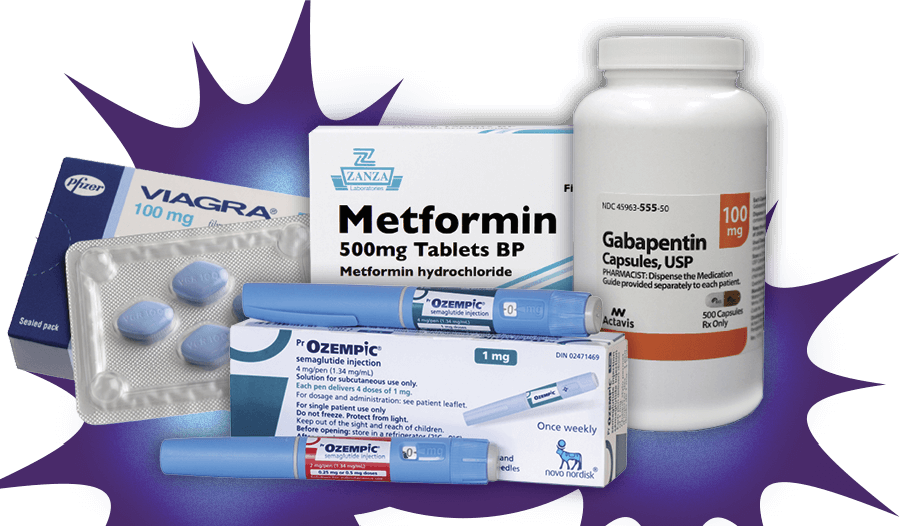
The drugs below already have proven unexpected benefits. Now researchers are looking at even more interesting new applications for these meds. By Nicole Pajer
Drug Type: Semaglutide (Ozempic, Wegovy)
Created For: Type 2 diabetes
Also Used For: Weight loss
Future Applications: Combating alcohol abuse
Drug Type: Sildenafil (Viagra)
Created For: Hypertension
Also Used For: Erectile dysfunction; pulmonary arterial hypertension
Future Applications: Pain management; lowering the risk of Alzheimer’s disease
Drug Type: Metformin (Fortamet)
Created For: Type 2 diabetes
Also Used For: Influenza in diabetic patients; weight gain from antipsychotic medicines
Future Applications: Lowering the risk of dementia and stroke in diabetic patients
Drug Type: Tricyclic antidepressants (various brand names)
Created For: Major depressive disorder
Also Used For: Bulimia; insomnia; obsessive-compulsive disorder
Future Applications: Irritable bowel syndrome
Drug Type: Gabapentin (Neurontin)
Created For: Controlling seizures
Also Used For: Post-shingles nerve pain; anxiety; alcohol addiction
Future Applications: Hot flashes